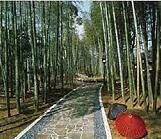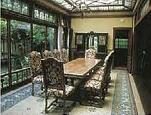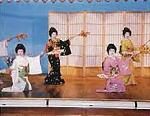A tour of locations for viewing Mt. Fuji, showcasing a wealth of Japanese culture!!
-

From Shizuoka Station to Kunozan Toshogu Shrine takes Approximately 40 minutes by ropeway, bus, JR train (JR Tokaido Main Line) and walking. -

A Shinto shrine associated with to former shogun Tokugawa Ieyasu. Enjoy the exquisite sculptures and colors of the shrine pavilion and worship hall.Access – From JR Shizuoka Station (JR Tokaido Main Line) 35 minutes by bus and 5 minutes by bas and ropeway.
From Kunozan Toshogu Shrine to Tokaido Hiroshige Art Museum takes Approximately 80 minutes by ropeway, bus, JR train (JR Tokaido Main Line) and walking.
-

This an museum has a collection of approximately 1,300 woodblock prints, with a focus on works by ukiyoe master Utagawa Hiroshige (1797 – 1858).Access – From JR Yui Station an approximately 25-minute walk.
A Littles further away… Satta Pass

An outstanding location from which to view Mt. Fuji where it looks the same as in nkiyoe woodblock prints.Access – From JR Okitsu Station (JR Tokaido Main Line), an approximately 60-minute walk.
From Tokaido Hiroshige Art Museum to Yui Cherry Shrimp takes Approximately 10 minutes walk.
-

As well us raw Cherry Shrimp, you can enjoy a year-round variety of cuisines such as kettle-fried and battered shrimp, and purchase shrimp and flaked bonito.Access – Front JR Yui Station (JR Tokaido Main Line), an approximately 5 minutes by taxi.
From Yui Cherry Shrimp to Numazu Imperial Villa Memorial Park takes Approximately 60 minutes by walking, JR train and bus.
-

This is a villa for recreational use by the imperial household. This historic building was constructed in 1893, and now features a park and resource center to pass on its history.Access – From JR Numazu Station (JR Tokaido Main Line), approximately 15 minutes by bus.
An Izu Specialty – Japanese Spider Crab

The Japanese spider crab caught in Suruga Bay is registered in the Guinness World Records w having the largest spa with some reaching three meters. A delicious, refreshing taste.From Numazu Imperial Villa Memorial Park to Shuzenji Arai Ryokan takes Approximately 75 minutes by bus, JR train, Izuinakone Railway and bus.
-

Many famous historical, wooden ryokan inns line the banks of the Katsura River in the onsen town of Shuzenji. Nowadays, a guide introduces you to these inns, which are tangible cultural assets, (Reservations required English guides available.)Access – From Izuhekone Railway Shuzenji Station, approximately 7 minutes by bus.
From Shuzenji Arai Ryokan to Shuzenji Spa you can reach by walking.
-

A town lined with historic buildings and bamboo groves. Enjoy walking around Shuzenji spa town, and soak up the atmosphere of old Japan.Shuzenji Spa, in which traditional Japanese ryokan inns line the banks of the Katsura River, which flows through the town. Many traditional ryokan and historical sites remain, with plenty to see.

Access – lzuhakone Railway Shuzenji Station.Day 2:
Bask in the feeling of antiquity by walking around this town with buildings and scenes redolent of old Japan.
Perry’s Black Ships and the Opening of Japan

Commodore Matthew Perry landed at Uraga in 1853, which was the spur to the opening up of Japan after well over 200 years of isolationism. The town of Shimoda on the Izu Peninsula was the scene of negotiations regarding the international exchange in Japan.From Shuzenji Spa to Joren Falls takes Approximately 30 minutes by taxi.
-

One of Izu’s famous waterfalls, where- water pushes over a luxuriantly forested 25-meter cliff, Wasabi, a specially of this region, grows in fields along these mountain streams.Access – From Izuhakone Railway Shuzenji Station, approximately 30 minutes by bus.
A little further away- Old Amagi Tunnel

A stone tunnel created in 1905. This has been designed an important cultural asset, and also makes an appearance in Yasunari Kawabata’s The Dancing Girt of lzu.Access – From Izu Kyuko Line Kawazu Station approximately 45 minutes by bus.
From Joren Falls to Shimoda Perry Road takes Approximately 100 minutes by taxi.
-

Shimoda was the first port fully opened to all foreign ships beside this stone road you can see buildings and historic sites that tell of the opening of Japan.Access – From Izu Kyuko Line Shimoda Station, an approximately 15-minuie walk.
You can reach to Ryosenji Temple from Shimoda Perry Road by walking
-

Ryosenji Temple was the site of the signing of the Convention of Kanajiawa, Shimoda Treaty in 1854. The temples treasure house contains exhibits tilling of the history of the opening of Japan from its isolation.Access – From Izu Kyuka Line Shimoda Station, an approximately 10-minute walk.
A little further away… Shimoda Floating Aquarium

Here you can see the sea life of Izu. In the Fureai Lagoon in the bay, you can swim and interact with dolphins.Access – From Izu Kyuko Line Shimoda Station, approximately 8 minutes by bus.
From Shimoda to IZU Kyuko Line (Seaside View Train) takes Approximately 10 minutes walk.
-

The Izu Kyuko Line runs along a beautiful coastline. So that you can better enjoy the view of the coast, this special train has scats facing the sea. Enjoy rail travel while gazing out upon the beautiful views.From IZU Kyuko Line (Seaside View Train) to Atami Station takes Approximately 95 minutes by Izu Kyuko or JR train.
-
Enjoy traditional Japanese culture at Atami.
Kiunkaku

A famous villa from the Taisho Period (1912 – 1926) that has also been used as a ryokan. The grounds include beautiful examples of traditional Japanese architecture that incorporate elements of western style, and are well worth viewing. More: Kiunkaku VillaYumemachi Flower Dance

Atami Spa, with the most geisha in Japan. Here, geisha train in traditional arts such as dances and shamisen, and they give regular performances.
Visit historical spots, and encounter Japanese history and culture.
Shizuoka Prefectural Tourism Association Model course expert guider will help you to fill of Japanese culture with Shizuoka’s historical walks! Guests from overseas who want to learn more about Japan should visit Shizuoka Prefecture, where they’ll find everything they could hope for. Enjoy Japanese culture and history to the fullest on the course.





